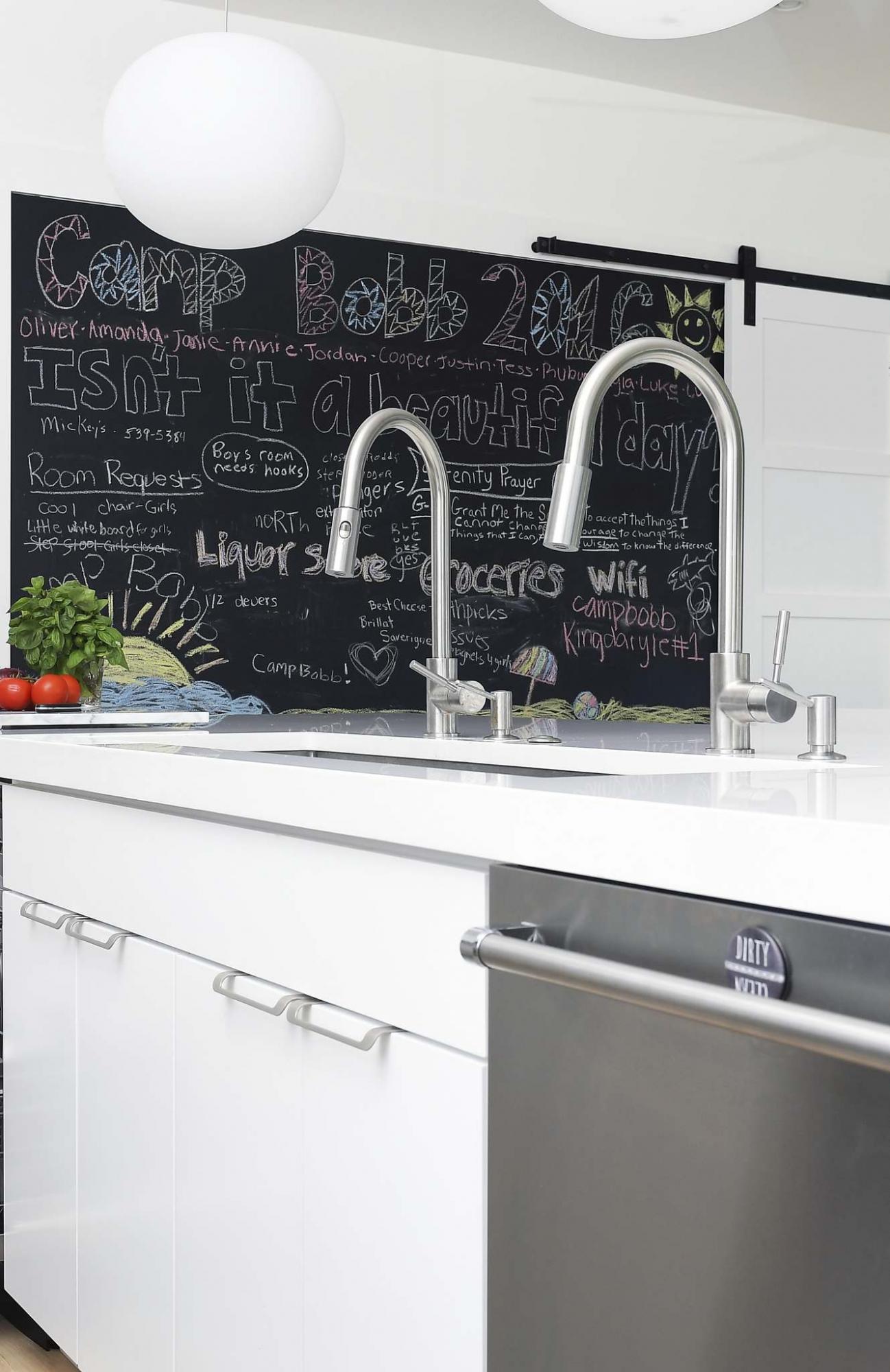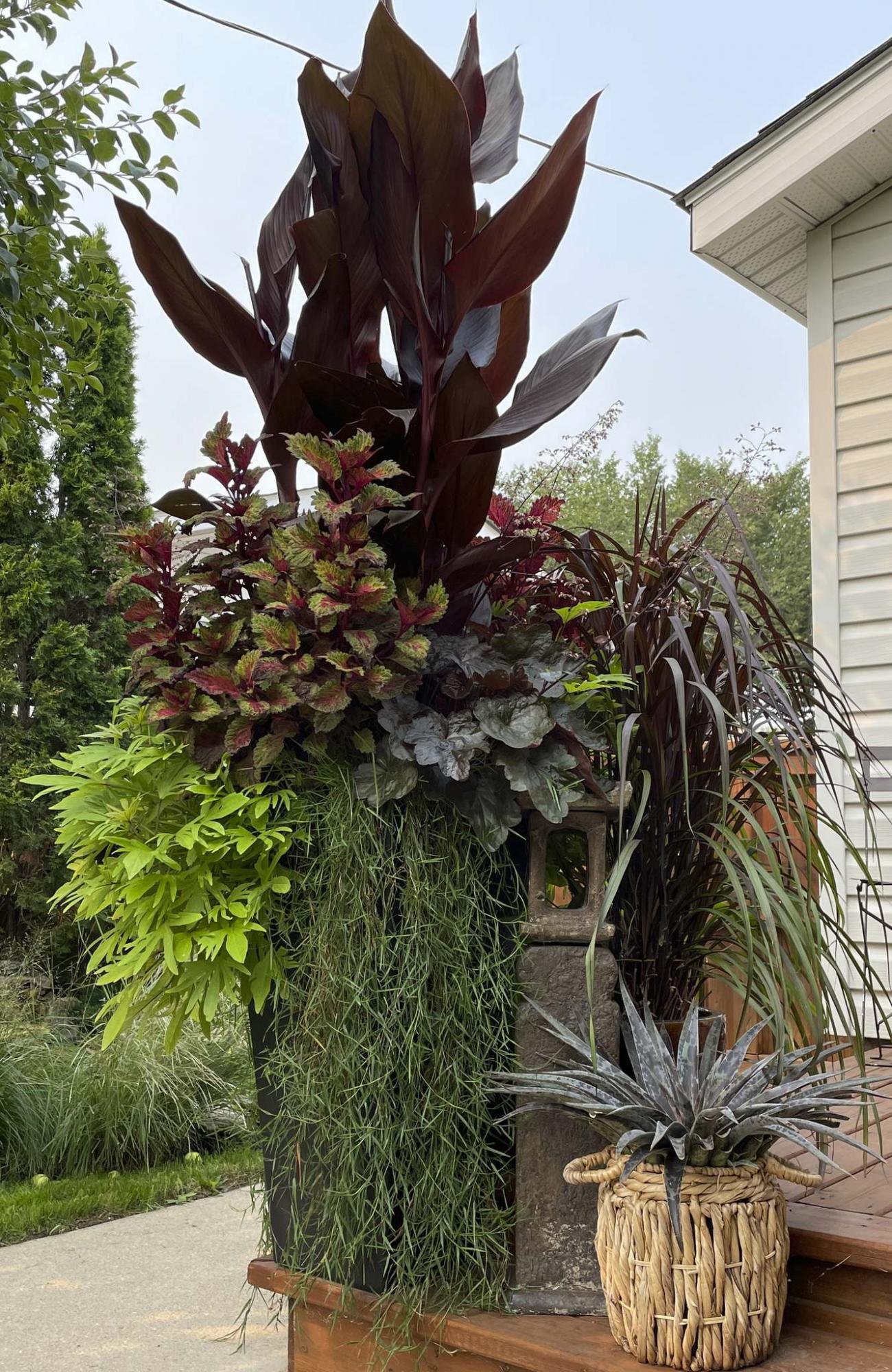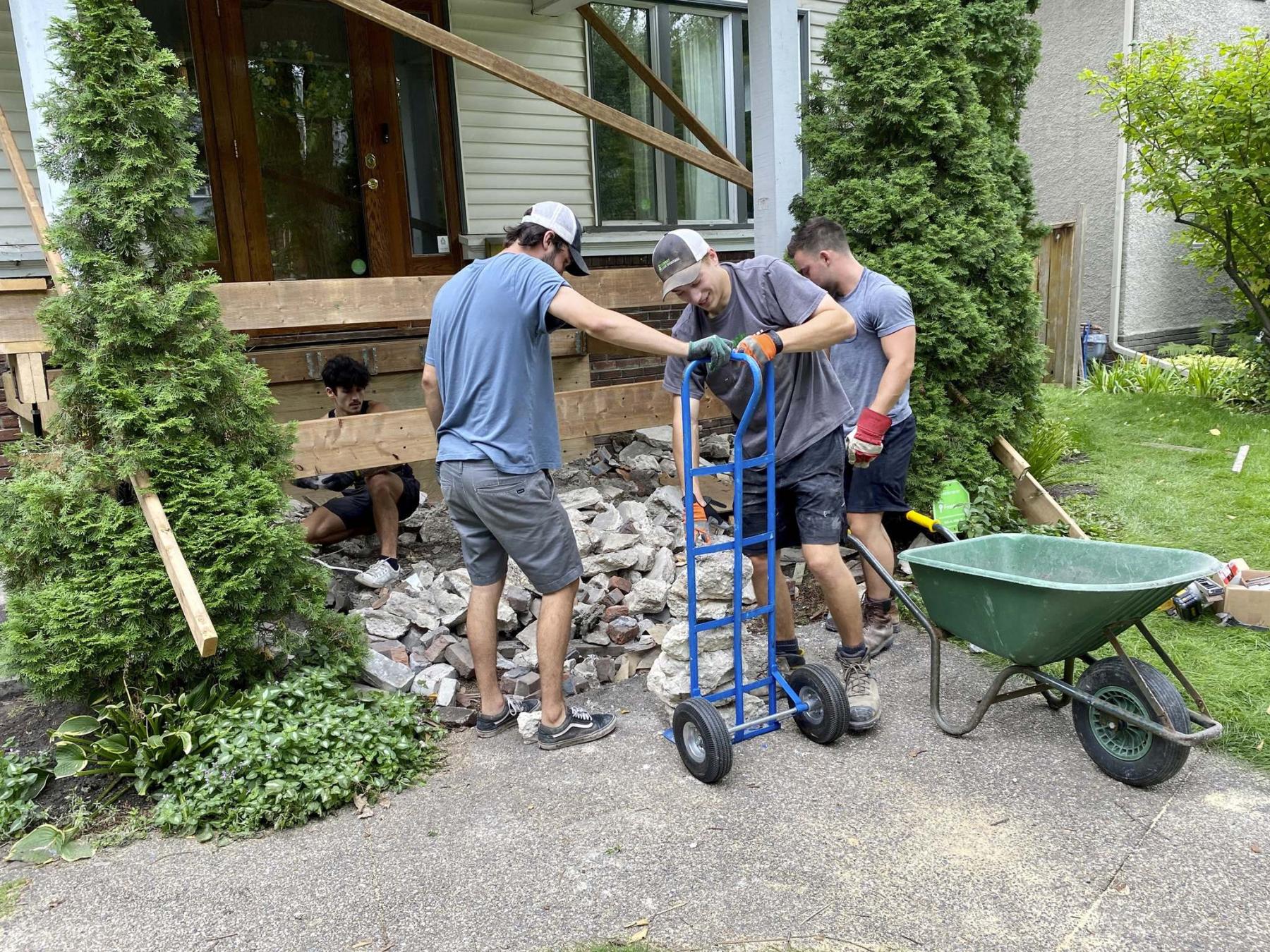Renovation & Design
Renovation & Design
Keep your oven clean with natural products
Question: What can I use indoors to clean my oven racks? — Avril
Answer: For people who do not own a self-cleaning oven, the oven mess does not have to become a dreaded chore. The world’s easiest way to clean an oven is to sprinkle the bottom with baking soda, the pour white vinegar over the baking soda and let it bubble and soak for 30 minutes. Wipe and rinse with water. In the meantime, put an old towel on the bottom of your bathtub, fill it with hot water and one-cup of washing soda. Let oven racks soak overnight and, in the morning, (while wearing gloves) rinse the racks and wipe with vinegar. Clean as a whistle! Regarding a self-clean oven, reading the manufacturer’s guidelines is the first step. If the self-clean feature does not clean the oven sufficiently, and you do not have the manufacture’s guidelines, consider sprinkling the floor of the oven with baking soda and water and using the techniques outlined above before activating the self-cleaning feature. Note: Do not leave water in the tub if small children reside in the home.
Question: If I could, I would eat Caesar salad for breakfast, lunch and supper, but I’ve heard it’s really unhealthy. What’s so bad about this salad? — Mark
Answer: I’m with you, I love Caesar salad, but if you compare something like a Big Mac with 550 calories and a traditional Caesar salad at 470 or more calories, they are too close for comfort. It is the oil used in the dressing that makes this salad a fatty delight. One tablespoon of dressing equals a minimum of about 60 calories. For a main salad dish, the rule of thumb is three tablespoons per portion. Next add the croutons, anchovies, cheese and bacon and boom— just like a credit card bill — it all adds up quickly. Light dressing is an option, but there are indeed healthier salad choices.
Question: What is the best tip to keep squirrels from getting into my bird feeder? — Bachdud
Answer: There are squirrel proof bird feeders available on the market, as well as manufactured covers for existing feeders. However, the easiest strategy for keeping those cute critters at bay is to fashion a hanging bird feeder, away from branches and anywhere else squirrels are able to climb. The same goes for hummingbird feeders, in my case, ants kept climbing onto the feeder. The solution was to secure a string under the roof, attached to the string was a chain, the ants and squirrels can no longer invade.
Friendly Manitoba Feedback
Re: Aching Feet
I worked for many years at the airport and was on my feet, either walking or standing for nearly the whole shift. I agree with your advice, but would also add one more solution. If you must spend extended time on your feet, it usually helps to have another pair of shoes to change into. Just the step of changing shoes and putting on a fresh pair will relax the foot significantly, especially if you are able to change the heel height even a small amount. The muscles in your feet and legs will thank you! Thanks for your column — Margaret
Polly Put the Kettle On
The best and world’s easiest way to clean the inside of a kettle is to boil white vinegar for five minutes. Rinse a few times with water before use (I learned that the hard way).
Clean the exterior of an electric kettle by scrubbing it with dish soap and water. Rinse with water.
To clean the outside of a burnt tea kettle, soak the kettle in hot water for 20 minutes. Scrub with baking soda and an abrasive, non-scratching cloth. Rinse and polish to dry. Another option is to wet a Mr. Clean Magic Eraser and scrub the kettle.
Note: Every user assumes all risks of injury or damage resulting from the implementation of any suggestions in this column. Test all products on an inconspicuous area first.
Reena Nerbas is a popular motivational presenter for large and small groups — check out her website: reena.ca.
info@reena.ca
Renovation & Design
Home inspections definitely have an expiry date
QUESTION: I’m a single woman who purchased an older home 16 years ago. When I purchased it, the previous owners left me the home inspector’s binder, outlining the state of the home when they purchased it a few years earlier. I often referred to it, it was excellent and very thorough, and used the advice as I considered and did repairs and maintenance over the years. Now, however, it’s 15 years later. That binder and its advice are about 18 years old. I have no plans to move, but would love that kind of current state-of-affairs snapshot that this inspector gave on my house. That way I can be aware of deterioration or concerns that may not have existed years ago. I don’t have the expertise to know what to look for as my house ages.
Do home inspectors do this kind of checkup without a house sale coming up? It seems ironic that I get maintenance advice from my car mechanic every six months, but don’t do the same for my house.
Thanks very much. I have enjoyed and learned from your column for years! — Ann
Answer: Hiring a registered home inspector (RHI) to do a periodic inspection on an older home is an excellent idea, for guidelines on maintenance and repair requirements. Some home inspectors may not be used to providing that type of service, so ensure you ask about their qualifications and background, which should include construction-related experience for the best advice.
Having a home inspection done before purchasing a home should be a normal part of the buying process. While this is frequently being omitted in the current seller’s market, the value cannot be questioned. Many buyers think the sole purpose is to identify items of immediate major concern, and that is a major focus, but not the only benefit. A good home inspector will also take the time to educate the future homeowner on items related to maintenance, specific to that property. These often include obvious advice on regular maintenance of the mechanical systems, but also should identify lesser-known items for that particular residence.
Issues related to grading, water management, vegetation, structural movement, and of course safety-related items may not be immediate concerns, but could be in the future. Deferred maintenance may be the most insidious cause of failure of various systems. For a recent example, lack of watering the area around the home has caused moderate to severe erosion of soil in many homes this summer. I have seen sidewalks, driveways, patios, decks, and even foundations affected by this loss of soil moisture. True, most of it is related to the recent drought conditions, but regular wetting of grass and gardens adjacent to the foundation can minimize the soil shrinkage. Replenishment of lost soil with new topsoil is also a low-cost regular maintenance solution to prevent movement related to dryness.
In normal years, water management and good drainage is equally as important to prevent foundation and leakage issues. Too often I observe loose or damaged eavestroughs and downspouts on many homes. Simple downspout extensions, to divert water to drainage swales and away from the foundation, are often loose, missing, or too short to provide adequate protection. Having roof rain water dump directly on or beside a house or foundation wall can have disastrous consequences. These repairs may only require a few sections of low-cost downspout pipe and a few screws. Even regular cleaning of eavestroughs, to remove leaves and other debris, may prevent seepage due to overflowing during a heavy rainstorm. Even in the recent dry conditions, water running toward the foundation from the few recent rains can find its way inside, especially if there is a gap between the dry soil and the concrete walls.
Other areas that are too often neglected are the wood-based items on the exterior of the home. Wooden trim on windows, soffits, fascia and siding must be regularly stained or repainted to prevent damage. While these areas are becoming much more maintenance-free in newer homes, there are still thousands that require regular work. Many of these are older, already, and exposed wood will be subject to premature rot if left untended. Even decks and fences, if not constructed of pressure-treated wood or composite products, should be recoated every few years. The cost of replacement has escalated exponentially in the last decade, due to higher lumber prices and wages for tradespeople. A hundred dollars’ worth of paint or stain and some elbow grease every few years can save thousands in replacement costs.
So, how often should a maintenance inspection be ordered? Somewhere between every five and 10 years should be a good guideline. Many items and systems on homes are designed to last 20 to 25 years, with proper attention. Lots of these can become prematurely deteriorated if neglected longer than a few years. Other low-maintenance products may last for decades, but still should be inspected periodically, to ensure they don’t need attention. Since the report you have is almost two decades old, much of its content may have already been attended to, otherwise it would be toast. It is surely time to update your knowledge of the current condition of your home.
Periodic inspection of your home, with an emphasis on maintenance issues, is a very good way to budget and plan for the future. Make sure you contact an RHI who has a construction-related background, for the best advice on prioritizing your home maintenance items identified in the new inspection report.
trainedeye@iname.com
Ari Marantz is the owner of Trained Eye Home Inspection Ltd. and a Registered Home Inspector. Ari can be reached at 204-291-5358 or check out his website at trainedeye.ca.
Renovation & Design
You've got questions -- he's got answers
Question: Where do your questions come from and what topics will you respond to?
Answer: It may seem a little odd for me to be answering this self-posed question after more than two decades of weekly columns, but it should still be relevant, even to longtime readers. As things have evolved, over time, I often find that inquiries from readers only trickle in and are often redundant. So, I posed this question to all of you regular readers in an attempt to spur on more responses.
At the bottom of each weekly submission is a small caption that explains where questions can be sent. Originally, I accepted not only emailed questions, but ones from good old Canada Post. At the beginning of this endeavour they may even have outnumbered the electronic inquiries. As the internet and email grew much more reliable and commonplace, I decided that it was much easier to cut and paste a digital question than manually type one into my laptop from a handwritten letter. Limiting those remaining few lovely mailed-in questions was a risk worth the effort. From that time forth, sending emailed submissions to trainedeye@iname.com was the primary means of getting a published response.
In addition to the regular emails from readers, I often include questions I receive from various other forms, often phone calls and other correspondence. Much of these are directly related to my home inspection service, whether from clients, my website, or from potential clients with home related issues. While it may take me a few days to respond to a general question received on my voicemail, I always endeavour to respond, as time allows. Thanks to the incredible reach of the internet, these inquiries often come from far and away. If the question has possible merit for my column, I will ask the caller if I can use it in a future article and print their name. Most people readily comply, but some will have privacy concerns over publication of their full name. I always respect that request by using only a partial name, and/or initials.
As far as possible topics, I have never really defined the parameters, nor have I severely limited the scope. Anything and everything to do with people’s homes is in play. Most questions are understandably related to either problems with current homes or renovations. The most popular ones almost always concern moisture issues in homes or mechanical systems that are often misunderstood. How to properly operate a heat recovery ventilator (HRV) easily tops the mechanical side of things, while basement, crawlspace, and attic moisture problems are prominent.
While these are undoubtedly the expected inquiries to an "Answers" column, I am still surprised at the relatively few questions I receive directly related to home inspections. When I first started writing this column, I regularly had to explain to most people what a home inspector did. Many homeowners and perspective buyers did not understand that there were individuals like me who would thoroughly evaluate a property prior to purchasing it. As the popularity and understanding of pre-purchase home inspections grew, I expected the questions to follow suit. While I rarely have to explain to people the complexities of the home inspection profession anymore, the focus of the emails has not changed substantially. I fully anticipated receiving weekly questions about unlicensed sub-standard home inspectors, pushy realtors, and cranky sellers. This just did not happen. Even questions about the entire home purchasing and selling process were few and far between. Regardless, I am still more than happy to address homeowner questions about cracked foundations and proper insulation methods.
But what about concerns with the extreme "buyer’s market" of the last couple of years? I have many questions from friends, family, and clients about the effect on mine and other inspector’s business, but almost none from readers. I am certain that there is a high level of curiosity in cyberspace, based on articles I have seen in numerous publications and online. What about the current state of affairs in regards to licensing of inspectors? Changes to the real estate acts in recent years, regarding condo purchases have been significant with the "cooling off period." Will that happen in the near future for all residential purchases? These and other house buying issues are constantly evolving and I am sure there are many people with relevant questions.
Now it is up to all of you "constant readers", to borrow a favourite phrase of Stephen King, to belly up to the bar. Please take a few minutes on your laptop, iPad, or smartphone and send me an email with a question about your experiences with your homes, as well as buying and selling. Don’t worry about full, proper sentences being an issue. A little editing is standard fare for most emails. If you have an issue or question about something you have not been able to answer, even with research on the web, send it to me. Especially if it has to do with a topic not previously discussed in these pages, or any inspection related queries, it is most welcome. I always endeavour to keep the topics fresh and varied, but I need your help to supply me with new material for that purpose. Thanks to those who have taken the time to send in previous questions, and to all of you for reading.
Ari Marantz is the owner of Trained Eye Home Inspection Ltd. and a Registered Home Inspector (RHI)(cahpi.ca). Questions can be emailed to the address below. Ari can be reached at 204-291-5358 or check out his website at trainedeye.ca.
trainedeye@iname.com
Renovation & Design
High-efficiency furnace blowers built to last
Question: Could you please advise on the following dilemma? I have a Keeprite high efficiency furnace and a heat recovery ventilator (HRV) installed in my home, built in 2014. The HRV is connected to the furnace and both have a separate control. When I turn the HRV on, via its control, the furnace fan starts running at the maximum possible speed. The furnace motor speed is extremely high, blowing the air very strongly. The HRV runs only when it is turned on, not constantly.
My concern is that this high furnace fan speed affects the furnace motor. I’ve changed the motor because the previous one died after three years of seasonal operation. I suspect that this HRV operation, which triggers such a high speed, was a contributing factor.
Thank you in advance, Henry.
Answer: Sometimes when an element of a home system fails there is no direct connection between its demise and other connected systems, even though it appears there might be. The furnace blower should be connected to the HRV control and should run at high speed when engaged, to help it effectively operate.
Some of the most common questions I receive are related to proper use and set-up of heat recovery ventilators (HRV). Especially since these have become a mandatory part of new homes in our area, in the last decade, inquiries are frequent. These fairly simple mechanical devices are often misunderstood, mainly because homeowners are not shown how to properly operate the system. Sometimes they are also not properly installed, or more commonly have the controls not fully engaged. In those situations, a regular service call by an experienced HVAC technician normally solves the problem. In your home, it appears that the HRV is properly set-up, and may have nothing to do with the short life of the furnace blower motor.
The reason that the HRV is cross-connected to the furnace blower control is to help move air through the entire home, once the HRV turns on. This is beneficial because that ventilation system has limited ducting and only a few intake registers in the entire home. There should be an intake in each bathroom, one near the kitchen, and often one in the laundry room. That is much different than the fresh air intake registers for the furnace, which has at least one register in each room of the house.
The HRV should have one duct that is connected to, or in very close proximity of, an opening in the furnace return air plenum. In this way, some of the air circulating through this small box will mix with the house air moving through the heating system. Even without the furnace blower running, this could help air distribution. The problem is that the HRV blower is very small, in comparison to the furnace fan, so it is not capable of efficiently circulating all that air by itself. Once the furnace blower engages, it will easily make up the shortfall and help the ventilation system move the conditioned air through the entire house. That will prevent the HRV from running too long, which can cause it too frost up in very cold weather.
It is also proper that the furnace blower run at maximum speed when the HRV engages it, due to the relatively cool temperature of the air being moved. The warmer the air the easier it is to blow through ducts. Because the HRV exhaust air is mixing with the incoming outside air it can be fairly cold when it enters its components.
A modern high-efficiency furnace is designed to have a blower that will last the entire life of the unit, with minimal maintenance and lubrication. It is designed to run almost continuously on the coldest or hottest days of the year. As long as it is cleaned and serviced regularly, it should not become deteriorated for more than two decades. The only thing that may prevent this longevity is infrequent replacement of the furnace filters. If left in too long they can become so dirty that airflow through is severely impeded, so change them as required.
Having your HRV control engage the furnace blower when it comes on is a proper set-up and should not affect the longevity of the motor. Your original one probably had a premature death because it was a defective or poorly made unit, not because the HRV caused it to work too hard.
Ari Marantz is the owner of Trained Eye Home Inspection Ltd. and a Registered Home Inspector (RHI)(cahpi.ca). Questions can be emailed to the address below. Ari can be reached at 204-291-5358 or check out his website at trainedeye.ca.
trainedeye@iname.com







